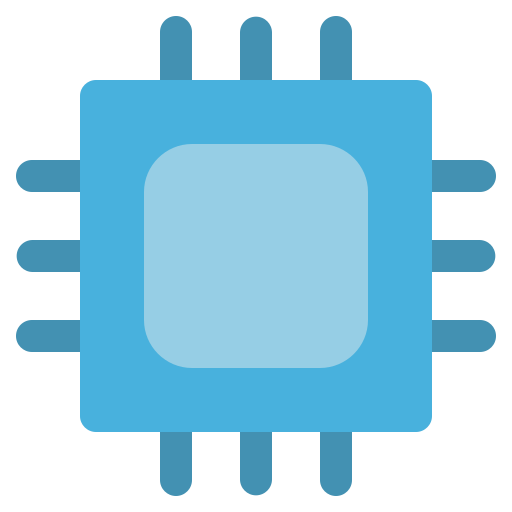

The 7950X3D or 9800X3D are both faster (besides the 7800X3D you mentioned).
GPU-wise this is obvious the best AMD has to offer, but an RTX 4090 is obviously faster still. With the typical caveats for NVIDIA on Linux.


The 7950X3D or 9800X3D are both faster (besides the 7800X3D you mentioned).
GPU-wise this is obvious the best AMD has to offer, but an RTX 4090 is obviously faster still. With the typical caveats for NVIDIA on Linux.


I’d rather have properly working accessories that connect using Thread (not Wi-Fi) to one another and work without requiring a separate app. Currently almost every manufacturer requires their own proprietary bridge or they want to connect directly to Wi-Fi.
Give me a button/switch, climate sensors (Eve Room comes to mind as it has Thread but it’s a PitA in some other ways), thermostats that can adjust based on an external climate sensor, lightbulbs etc.
Apple TVs and HomePods already work fine as a “Home hub”, I don’t need a separate, central display.


I have several components in my network that are at least 6 years old. Is that a problem…?


Zumal du dir bei iFixit auch ziemlich sicher sein kannst, dass es den Shop nach deinem Kauf noch jahrelang gibt, während der Verkäufer auf eBay gerne mal nach ein paar Wochen verschwindet und potentielle Reklamationen so quasi unmöglich macht.


Does the CLI still work? If so, you could download and play all the Windows 7 compatible, DRM-free games in your library just fine. Alternatively, if you already had these games installed, they’ll work fine without launching Steam first.


full mirrors of YT
Yeah…not going to happen.


tl;dr: if your main use case is gaming, get this one.
I’d say depends. I have a 7950X3D and some games can absolutely saturate the 3D cache CCD on their own. If you then have anything a little more intensive running in the background, the performance of the game will heavily degrade on a 7800X3D/9800X3D, while the 7950X3D/9950X3D has a whole CCD more to handle such tasks. Just keep in mind that the game process needs to be pinned to the X3D CCD for optimal results (which under Windows Game Bar usually does fine, but not always; under Linux you can use Feral GameMode).
So for most people, the 9800X3D will be a great choice (depending on actual pricing of course). Lighter tasks such as music playback or Discord with Krisp noise suppression can easily run on the same CCD and you’d be hard pressed to notice a difference in performance. But if you stream with software encoding for whatever reason or use demanding OBS plugins or whatever else you might want to do while gaming, then the 7950X3D will absolutely outperform the 7800X3D in games.
And obviously for heavily threaded productivity work outside of gaming, the 7950X3D can be 2x as fast. The 8-core parts aren’t exactly slow though.
Another advantage of the single CCD parts (7800X3D/9800X3D) is the fact that it “just works”. As I said, game processes need to be pinned to the X3D CCD to properly take advantage of it, and while this works automatically most of the time (with Xbox Game Bar), it doesn’t work for some titles, requiring you to manually pin the process. This is also why a lot of gaming benchmarks have the 7800X3D above the 7950X3D, even though the 7950X3D has a higher binned X3D CCD. With proper manual adjustment, a 7950X3D will outperform a 7800X3D in gaming.
I do wonder whether the 9950X3D will have both CCDs with 3D cache now that the frequency issues are at least partially resolved. If the CPU scheduler avoids putting threads of the same process on cores of different CCDs, this process pinning would no longer be necessary.


Sounds cool, I just fail to understand how this takes Cinnamon “out to the real world”.


The feature itself is great. It records the last two hours by default and lets you easily create clips from that. The editor is right there in the Steam overlay, it’s pretty great.
I only used it under Linux, and that’s where I’d say it is still very much a beta experience. I have an AMD Radeon 7800 XT. Most of the time, Steam picks up on its hardware acceleration - sometimes it doesn’t. When it doesn’t, it falls back to CPU encoding (obviously) which occupies around 3-4 cores on my 7950X3D to record 3440x1440 at the highest quality setting. GPU encodes are H.264 even though the GPU is perfectly capable of encoding AV1. Performance impact ranges from almost zero to as much as 30%, which seems a bit excessive. On some games that have a splash screen (Sea of Thieves for example), all it will record is said splash screen, even when it’s not shown anymore: you get gameplay sounds, but the video is just a static image with mouse cursor artifacts. It didn’t record sound from one of the microphones I tried. After swapping it out for a different one, my voice is being recorded. At least one session the shortcut for saving a clip just resulted in an error sound instead of a clip being saved.
So it’s a bit disappointing so far. Yeah, Linux shenanigans and relatively small user base, but Valve out of all companies should treat Linux as a first-class platform. Yes, they do a lot for Linux, with Proton and whatnot. But ironically Steam itself is only in an “okay, it kind of works” state. No official packages for anything but apt-based distributions and Wayland (scaling) support is meh at best.
It did seem to work a lot better on the Steam Deck with very little performance impact in my short testing, so there’s that.


What’s Ullr?


Just mighty.


Not sure if you still encounter the issue, but I finally did some trial and error.
It doesn’t seem to be related to the AMD GPU, as I briefly swapped it out for an Intel Arc A750 and had the same issue. I then went ahead and tried disabling most onboard devices of my mainboard (ASUS ROG Strix B650E-E) and sure enough: that fixed it. I then re-enabled them one by one, trying waking the PC from sleep each time and narrowed it down to the on-board Bluetooth.
Do you happen to have a mainboard that has the “MediaTek MT7922A” (or AMD rebranded variant “AMD RZ616”) Wi-Fi/Bluetooth card? If so, try disabling the Bluetooth portion of it in the BIOS.


Let me guess without reading: kernel-level anti-cheat?


Include adding kernel level anti cheat to that. This should just give us an option to get a full refund.


Sounds about right. There are some valid and good use cases for “AI”, but the majority is just buzzword marketing.


Block it and move on with your life?


The main thing (by far) degrading a battery is charging cycles. After 7 years with say 1,500 cycles most batteries will have degraded far beyond “80%” (which is always just an estimate from the electronics anyway). Yes, you can help it a bit by limiting charging rate, heat and limit the min/max %, but it’s not going to be a night and day difference. After 7 years with daily use, you’re going to want to swap the battery, if not for capacity reduction then for safety issues.
I think I have a simple function in my .zshrc file that updates flatpaks and runs dnf or zypper depending on what the system uses. This file is synced between machines as part of my dotfiles sync so I don’t have to install anything separate. The interface of most package managers is stable, so I didn’t have to touch the function.
This way I don’t have to deal with a package that’s on a different version in different software repositories (depending on distribution) or manually install and update it.
But that’s just me, I tend to keep it as simple as possible for maximum portability. I also avoid having too many abstraction layers.


That’s mostly down to Teams though (being the bloated web app that it is), and not the underlying operating system.
deleted by creator